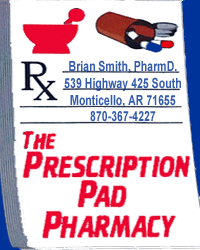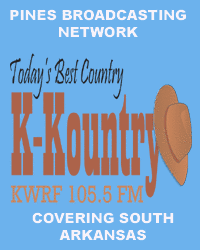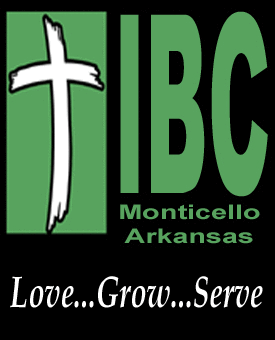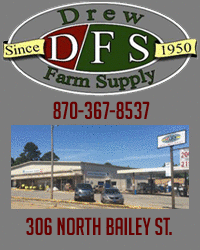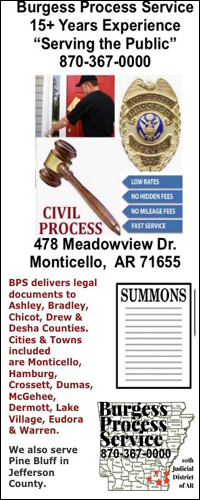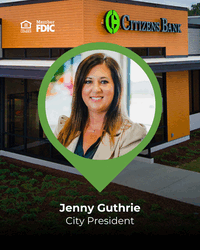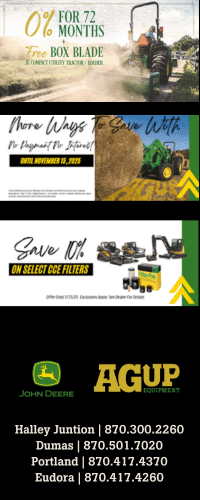The Monticello Tree Board: Tree Pruning Dos and Don’ts
March 28th, 2018 by Submitted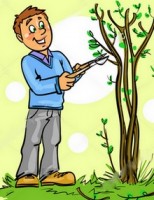 Over the past couple of weeks your Bradford pear tree has bloomed and a smattering of Harbingers-of-Spring have revealed themselves in your lawn, maybe along with some random clovers. Spring is in the air. Time to start thinking about your trees.
Over the past couple of weeks your Bradford pear tree has bloomed and a smattering of Harbingers-of-Spring have revealed themselves in your lawn, maybe along with some random clovers. Spring is in the air. Time to start thinking about your trees.
From the Ouachita to the Ozarks, to the Piney Woods of our home in southeast Arkansas, trees are important to Arkansas history, culture, and identity. The Monticello Tree Board would like to provide you with some helpful tips to maintain your trees’ health as we move into Spring. We also invite you to join the Monticello Tree Board and other organizations at 10:30 a.m. on Saturday, March 31, as we dedicate Drew County’s World War I Memorial Tree and celebrate Arbor Day and Tree City USA at the Monticello Library (114 W. Jefferson Ave.).
Reasons to prune
Maintaining healthy trees in your yard and on your property provides shade from the hot, humid summers, habitat for songbirds, and an eye-pleasing landscape. Pruning is our most common tree care and health maintenance tool. As we move towards spring and summer, now is a great time to inspect your trees and plan your annual pruning.
No branch should be removed without a good reason, particularly as few plants require routine pruning. For most trees, there are two reasons to prune. First, to improve safety and reduce risk. You may consider removing low-hanging branches, “limbing-up”, to avoid hitting your head or getting your eye poked. You may also consider removing branches that over-hang above a roof, garage/carport, sidewalk, or utility lines (but first consult municipal offices or tree-trimming company). But, you should never prune near utility lines; leave that to the professionals.
The second reason is when there are dead, dying, diseased, or damaged branches (the “4 Ds”). This is not only a safety precaution but also improves the health of your tree. Areas with spindly or weak growth or where branches cross and rub should also be considered for pruning.
Outside these two reasons, mature trees should only be pruned for corrective or preventative reasons, often in the interest of increasing light or air flow through the tree. Routine or heavy pruning can cause stress and damage, which decreases tree health. When deciding to prune, balance your reasons for pruning with consideration of the tree’s health.
When to prune
After you decide that pruning is required, the big question is when do you prune your tree? The answer is that it depends on your purpose for pruning. Pruning in the late winter or early spring, when a tree is dormant, is common but it is not the only rule to prune by. The later you wait to prune, just before new growth (the “flush” or “leaf-out”), the better. This means the wounds left by pruning will be exposed for a shorter period of time. If you miss that timing and leaves are beginning to grow, wait until leaves fully emerge to prune.
Pruning at the proper time avoids disease and tree health problems. Never prune in the fall, as fungi are more active and disease more likely. If you are uncertain about when to prune, consult with a specialist or your county extension agent.
Proper pruning and essential tools
It is hard to prune if you do not have the right tools. Hand shears, lopping shears, and a pruning saw are the tools for the job, along with all recommended safety equipment.
For most young to adolescent trees, you may be equipped to prune yourself. Avoid ladders and pruning anything you cannot reach from the ground. For larger, taller tree species, or situations where branches are over-hanging property, utility lines, or structures, consult with a specialist or tree trimming company.
For mature trees, a typical pruning cycle will be once every 3-5 years. But type, size and health play a role in which cycle is best for your tree. For every tree you decide to prune, you should always use the three-cut method to avoid tearing off bark. The first cut should be at least 6-inches out from the trunk, an undercut one-third to one-half way through the branch. Make the second an overcut an inch farther out on the branch until the branch breaks free. For the third cut, identify the branch collar— the swollen area where the branch joins the trunk —and cut so only branch tissue is removed, not trunk tissue. Prune to just beyond the branch collar, but do not leave a stub.
Dos
1. Wait until the proper time to prune your tree based its species, age, and health condition, but also environmental conditions.
2. Clean your tree by removing any dead, dying, diseased, or damaged branches.
3. Thin select branches to improve structure that increase light and air flow.
4. Raise, or limb-up, your tree by removing low-hanging branches.
5. Consult with professionals if you are uncertain about what or how to prune, or your trees are close to utility lines, are too tall to prune from ground, or overhang into a neighbor’s yard.
Don’ts
1. Don’t prune too much or prune for pruning’s sake, it will have negative effect on tree health.
2. Don’t prune your neighbors tree(s), that’s not your tree.
3. Don’t prune in the fall, never. Damaged, dead, or diseased branches can be removed anytime.
4. Don’t prune during leaf-out, wait until leaves fully emerge.
5. NEVER top your tree or cut large roots, it will have negative effect on tree health.
Final note
Pruning is an art and skill developed over time. It is never too late to learn how to prune, or to learn something new about pruning that is different from how you have always done it. Learn from your past experiences, consult with specialists or your county extension office, and always ask yourself why you are pruning and if it is necessary this year. Know your trees; balance your decision to prune with their natural history, their flush (bud), and with the tree’s purpose to provide the best tree care and maintenance.
Choose another article
Newer article: Transformer Blows 1,621 Customers Out of Power
Older article: Car Crash, Broken Pole & Lines Down on Gabbert St.









